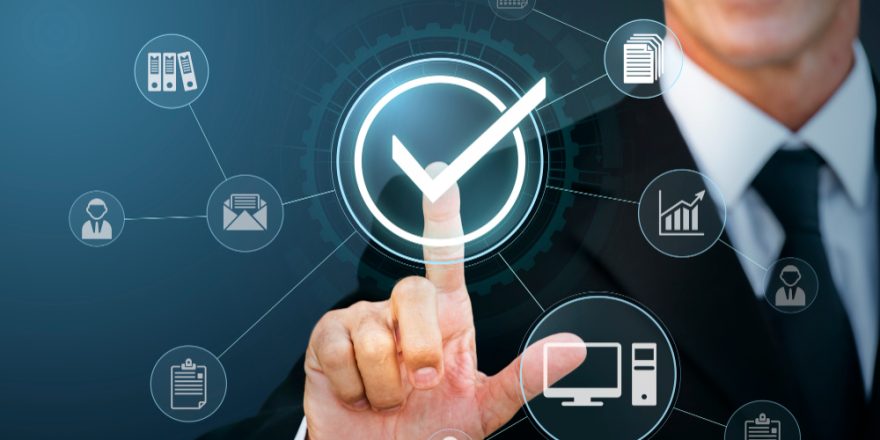In today’s data-driven world, the ability to extract meaning from information is a valuable skill. Python, a versatile and beginner-friendly programming language, has become a powerhouse for data analysis. This guide empowers you, regardless of your background, to leverage Python for your everyday data wrangling needs.
Why Python for Data Analysis?
- Readability: Python’s syntax is clear and concise, resembling natural language for easier comprehension. This is a stark contrast to languages with complex syntax, making it perfect for beginners.
- Powerful Libraries: Python boasts a rich ecosystem of data analysis libraries like Pandas, NumPy, and Matplotlib. These libraries provide pre-built functions for data manipulation, statistical analysis, and visualization, streamlining your workflow.
- Open-Source and Free: Python is freely available with a supportive community, offering a cost-effective and collaborative learning environment.
- Versatility: Python extends beyond data analysis. As you progress, you can explore web development, machine learning, and other applications.
Getting Started with Python
Here’s what you’ll need to embark on your Python data analysis journey:
- Python Installation: Download and install Python from the official website.The installation process is straightforward and includes essential libraries for basic use.
- Code Editor or IDE: A code editor (like Sublime Text or Atom) or an Integrated Development Environment (IDE) like Jupyter Notebook provides a platform to write, run, and visualize your Python code. Jupyter Notebook is particularly beginner-friendly, offering a user-friendly interface that blends code and output seamlessly.
Essential Python Libraries for Data Analysis
- Pandas: This is the go-to library for data manipulation and analysis. It excels at working with structured data, stored in formats like CSV (Comma-Separated Values) and Excel spreadsheets. Pandas allows you to:
- Load data from various sources
- Create and modify DataFrames (tabular data structures)
- Perform data cleaning and transformation
- Explore data through descriptive statistics and visualizations
- NumPy: NumPy serves as the foundation for scientific computing in Python. It offers powerful arrays (multidimensional data structures) and mathematical functions for numerical computations. While not as user-friendly as Pandas for beginners, NumPy plays a crucial role behind the scenes in many data analysis tasks.
- Matplotlib and Seaborn: These libraries are the workhorses of data visualization in Python. Matplotlib offers a comprehensive set of tools for creating various plots and charts, while Seaborn builds upon Matplotlib to provide aesthetically pleasing and statistically informative visualizations.
Advanced Techniques and Considerations for Python Data Analysis
- Data Wrangling Techniques:
- Handling Missing Values: Missing data is a common challenge. You can choose to impute missing values (replacing them with estimates), remove rows/columns with excessive missingness, or utilize techniques like K-Nearest Neighbors for imputation.
- Data Transformation: Feature scaling (normalizing data to a specific range) and encoding categorical variables (converting them into numerical formats suitable for analysis) are crucial steps for many machine learning algorithms.
- Data Validation: Implementing checks to ensure data quality and consistency throughout the analysis process is essential.
2.Data Visualization Best Practices:
- Choosing the Right Chart Type: Select chart types that effectively represent the data and the relationships you’re trying to convey. Bar charts for comparisons, scatter plots for correlations, and line charts for trends are some common examples.
- Color and Labeling: Use color palettes that are visually appealing and accessible for colorblind viewers. Ensure clear and concise labels for axes and data points.
- Interactivity: Consider interactive visualizations using libraries like Plotly or Bokeh, allowing users to explore the data dynamically.
3.Version Control with Git:
- Collaboration and Reproducibility: Version control systems like Git help track changes to your code, enabling collaboration with others and ensuring you can reproduce your analysis in the future.
- Cloud Computing Platforms:
- Scalability and Accessibility: For massive datasets or complex computations, consider leveraging cloud platforms like Google Colab or Amazon SageMaker. These platforms offer access to powerful computing resources that can handle large-scale data analysis tasks.
FAQs:
- What are some other data analysis libraries in Python?
While Pandas, NumPy, Matplotlib, and Seaborn are a strong foundation, Python boasts a rich ecosystem of additional libraries:
- SciPy: Offers advanced mathematical functions and algorithms for scientific computing.
- Scikit-learn: A machine learning library for tasks like classification, regression, and clustering.
- Beautiful Soup: Ideal for web scraping, extracting data from websites.
- NetworkX: Analyzes graphs and networks, useful for social network analysis or route optimization.
- What if I don’t have a programming background?
Python’s readability makes it a great starting point for beginners with no prior coding experience. Numerous online tutorials, courses, and beginner-friendly books cater to those new to programming.
- How much data can Python handle?
Python can handle a substantial amount of data, especially when coupled with libraries like Pandas, which are optimized for working with large datasets. However, for extremely large datasets, distributed computing frameworks like Apache Spark might be necessary.
- Is Python useful for data analysis in specific fields?
Absolutely! Python’s versatility makes it applicable across various domains:
- Finance: Analyze financial markets, build trading models.
- Healthcare: Analyze medical data, develop predictive models for disease diagnosis.
- Marketing: Understand customer behavior, personalize marketing campaigns.
- Social Sciences: Analyze social media data, study demographics and trends.
- Where can I find free datasets to practice with?
Several websites offer free and publicly available datasets suitable for practicing your Python data analysis skills:
- Kaggle
- UCI Machine Learning Repository
- World Bank Open Data
- Google Public Datasets
- What are some career opportunities in Python data analysis?
The demand for Python data analysts is rapidly growing. Some potential career paths include:
- Data Analyst
- Data Scientist
- Business Intelligence Analyst
- Machine Learning Engineer
- How secure is Python for data analysis?
While Python itself is generally secure, security considerations become important when dealing with sensitive data. Here are some best practices:
- Data Access Control: Implement mechanisms to restrict access to sensitive data only to authorized users.
- Data Encryption: Encrypt sensitive data at rest and in transit to protect it from unauthorized access.
- Library Security: Stay updated on potential vulnerabilities in the data analysis libraries you use and apply security patches promptly.
- What are some ethical considerations in data analysis?
- Bias: Datasets and algorithms can perpetuate biases. Be mindful of potential biases in your data and strive for fairness and inclusivity in your analysis.
- Privacy: Ensure you have the proper permissions to access and analyze data, especially when dealing with personal information.
- Transparency: Be transparent about your data sources, methodology, and limitations of your analysis.
- Can Python be used for data analysis on mobile devices?
While Python itself isn’t typically used for native mobile app development, there are libraries like Kivy that allow you to create mobile apps with Python code. Additionally, cloud platforms can be leveraged to execute Python code remotely and visualize results on mobile devices.
- How long does it take to learn Python for data analysis?
The time it takes to learn Python for data analysis depends on your prior programming experience and the depth you want to achieve. If you’re new to coding, it can take a few months to grasp the fundamentals. However, becoming proficient in data analysis with Python takes dedicated practice and ongoing learning.
- What are some of the limitations of Python for data analysis?
- Speed: Compared to compiled languages like C++, Python can be slower for computationally intensive tasks. However, libraries like NumPy and optimization techniques can mitigate this to some extent.
- Memory Management: Python handles memory management automatically, which can be less efficient for very large datasets. Consider distributed computing frameworks for such scenarios.
- Is Python a good choice for data visualization?
Absolutely! Libraries like Matplotlib and Seaborn provide a powerful and versatile toolkit for creating various charts and graphs to effectively communicate your data insights.
- What are some real-world examples of how Python is used for data analysis?
- Retail companies: Analyze customer purchase history to identify buying patterns and personalize marketing campaigns.
- Financial institutions: Analyze market trends, assess creditworthiness, and develop fraud detection models.
- Social media platforms: Analyze user behavior and content to personalize user experience and target advertising effectively.
- Scientific research: Analyze experimental data, model complex systems, and identify patterns in scientific observations.
Conclusion
Python empowers you to unlock the potential of data in your everyday life. With its beginner-friendly syntax, powerful libraries, and vast learning resources, Python equips you to transform raw data into meaningful insights. This guide provides a springboard for your data analysis journey. Embrace the exploration, experiment with different datasets and techniques, and witness the power of Python in transforming information into knowledge.





